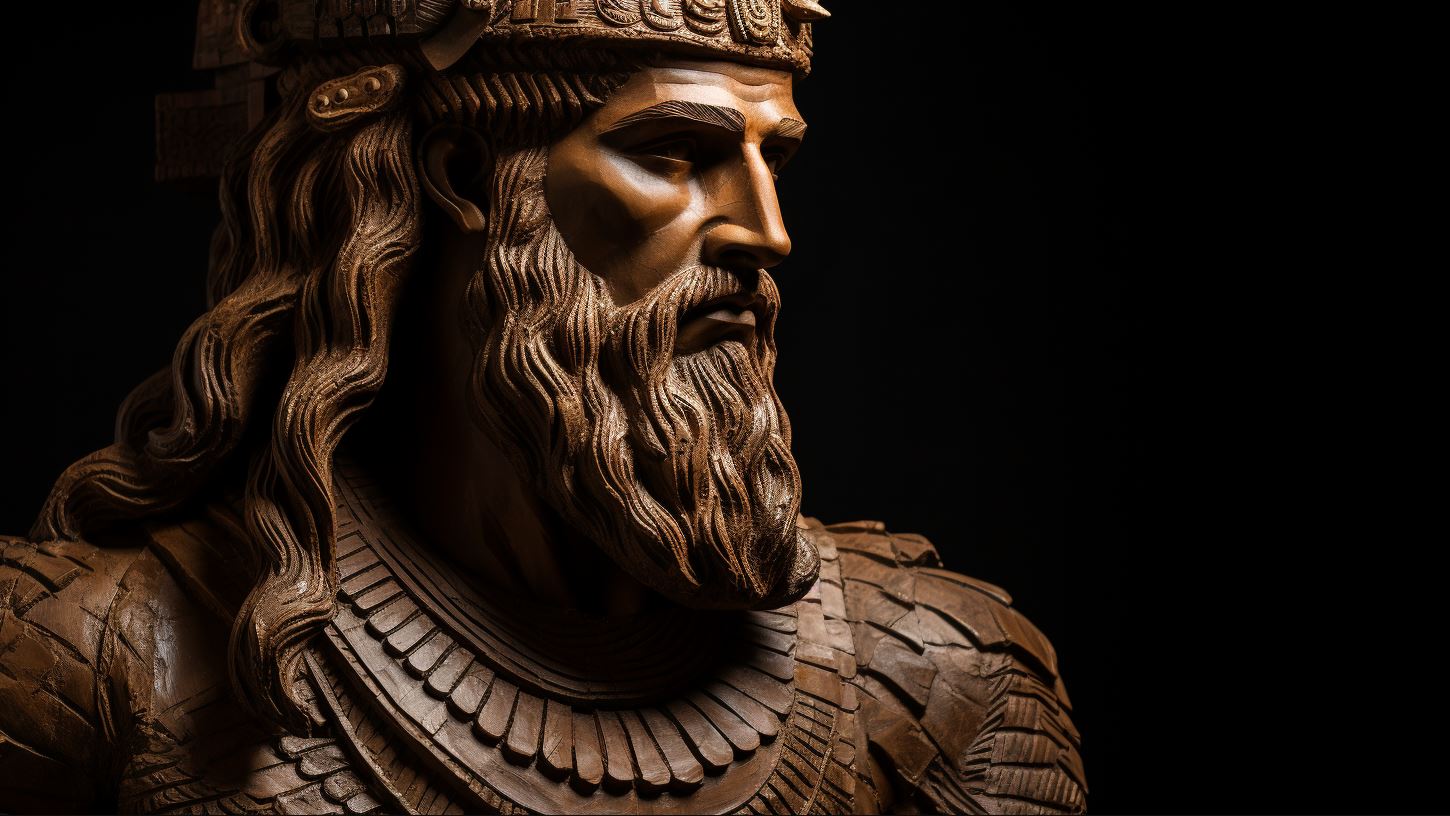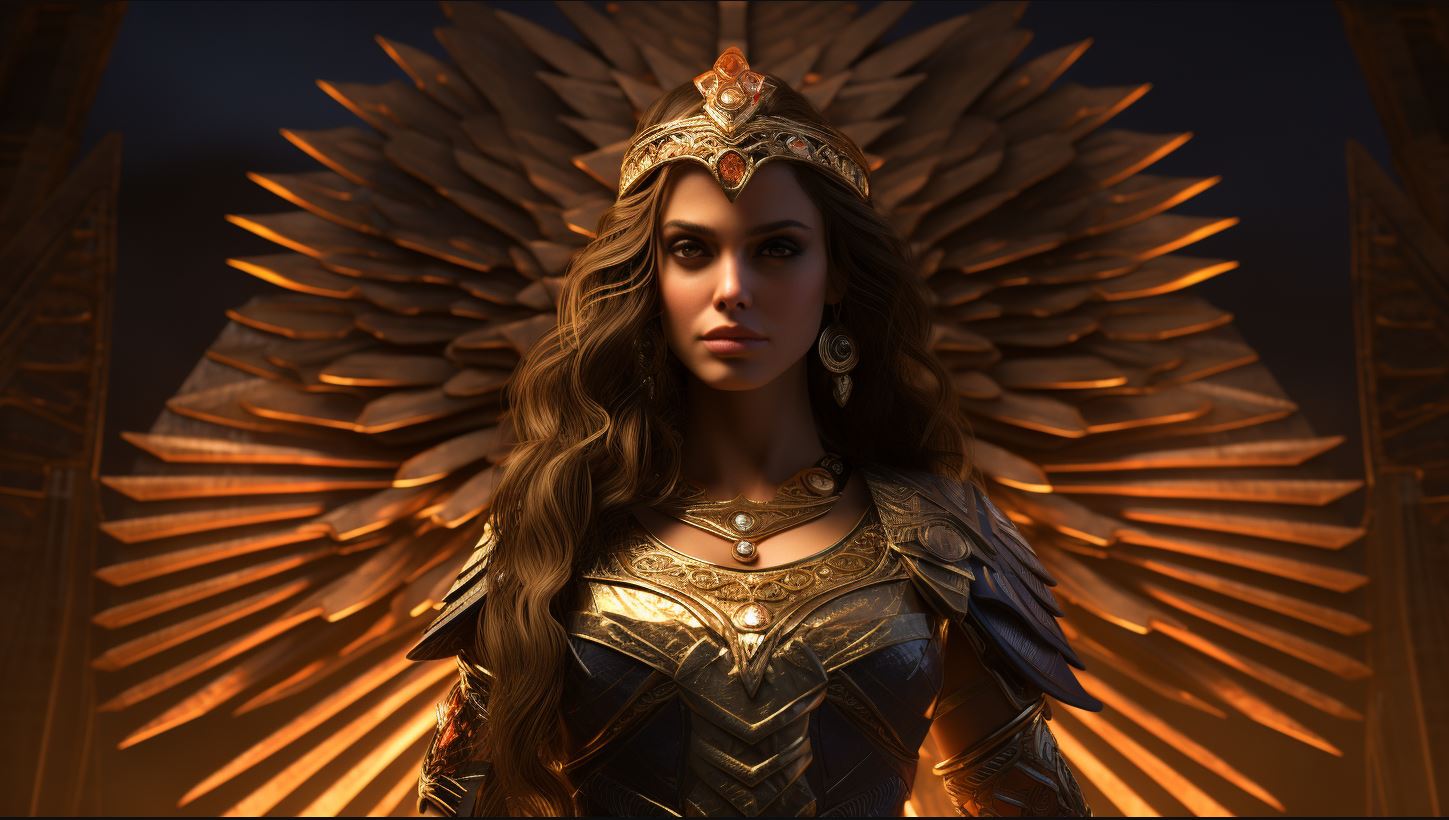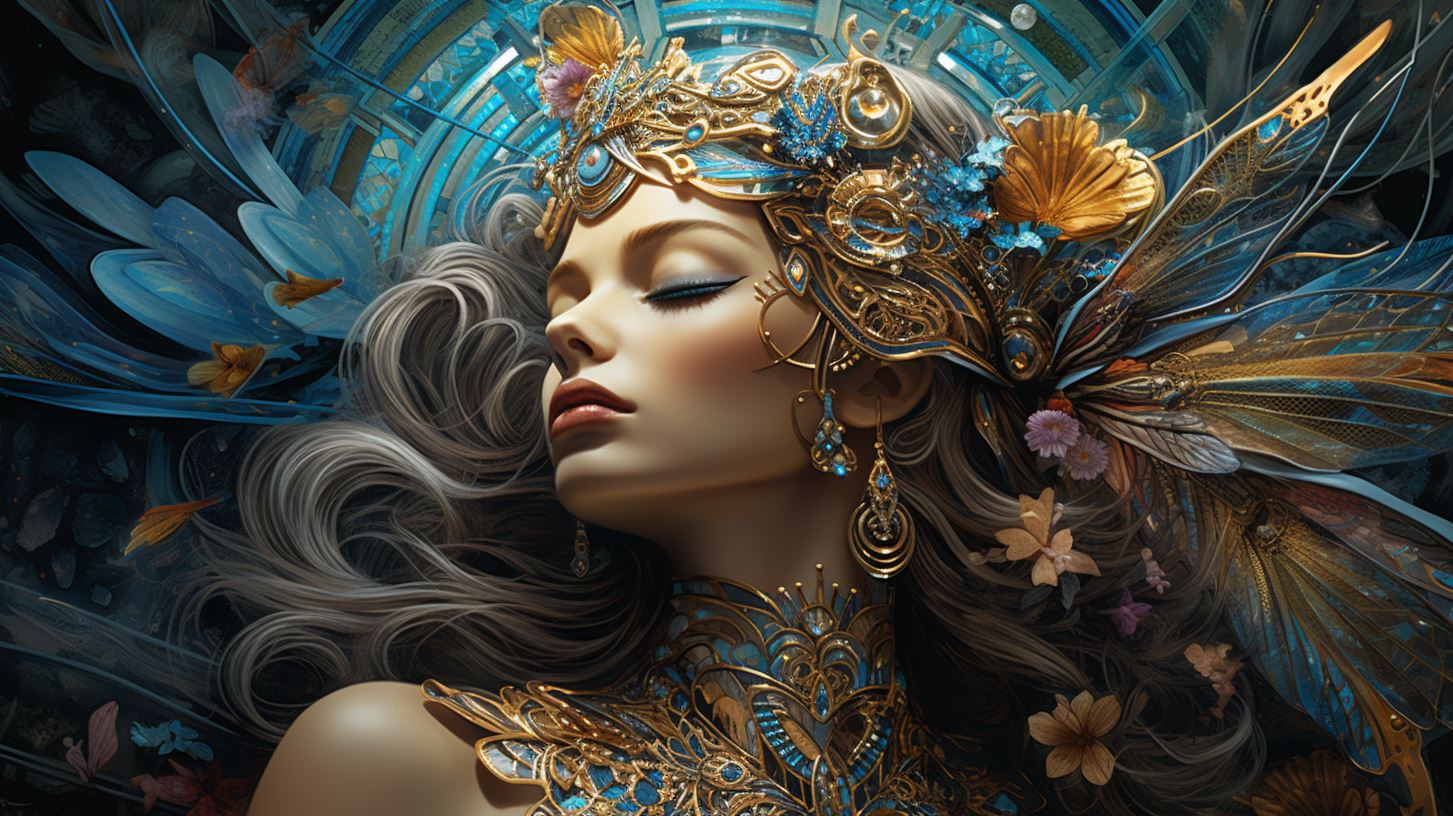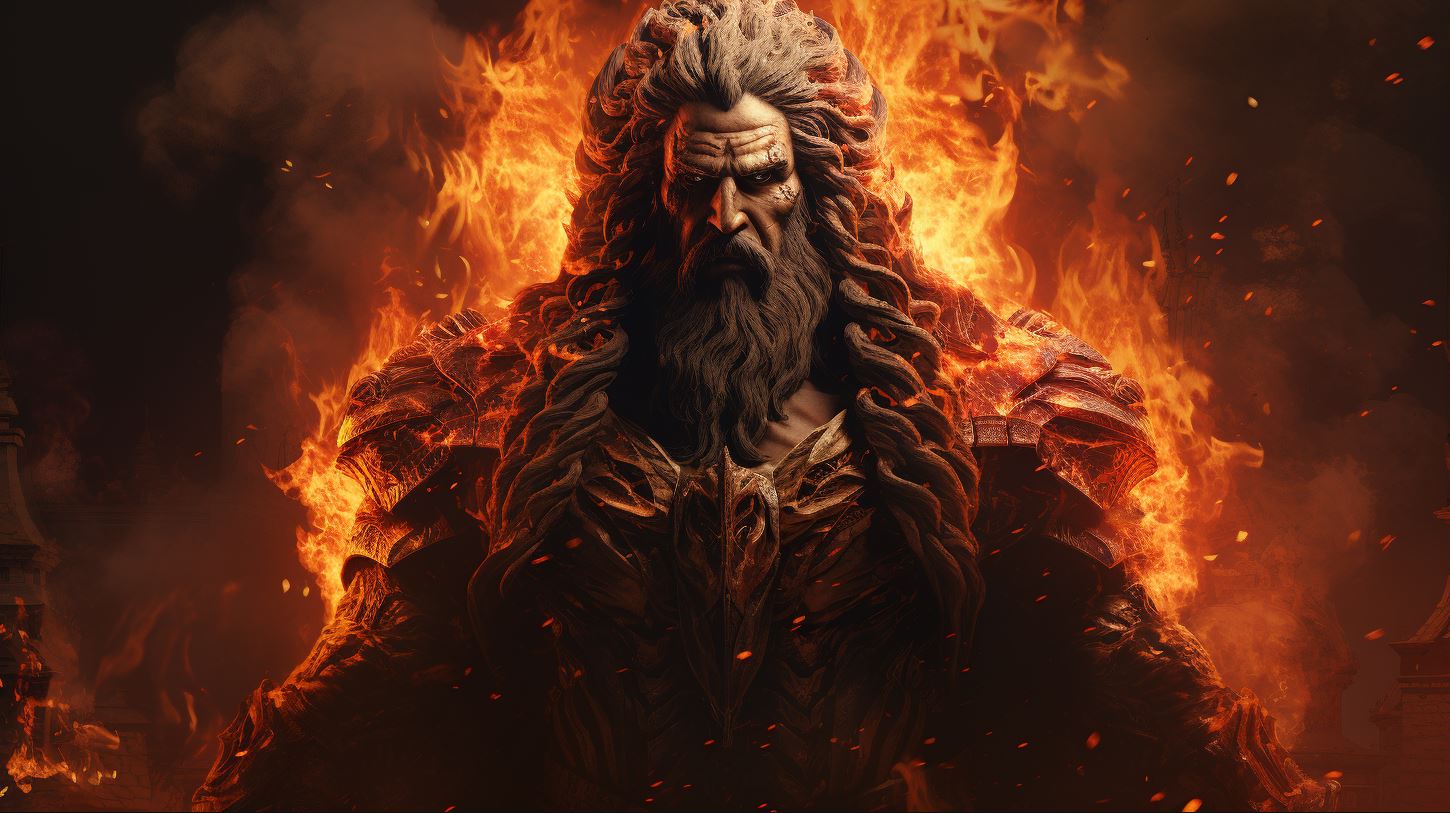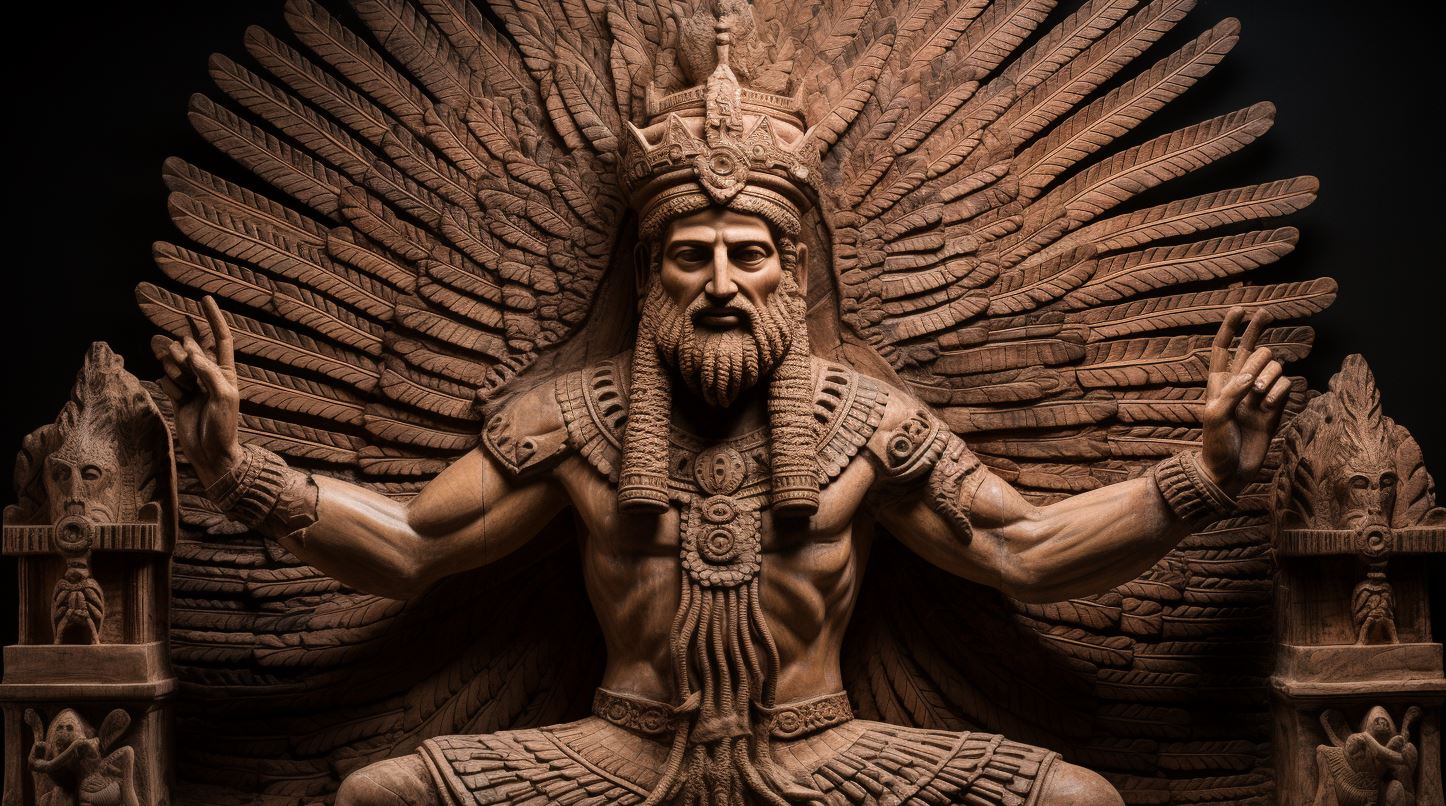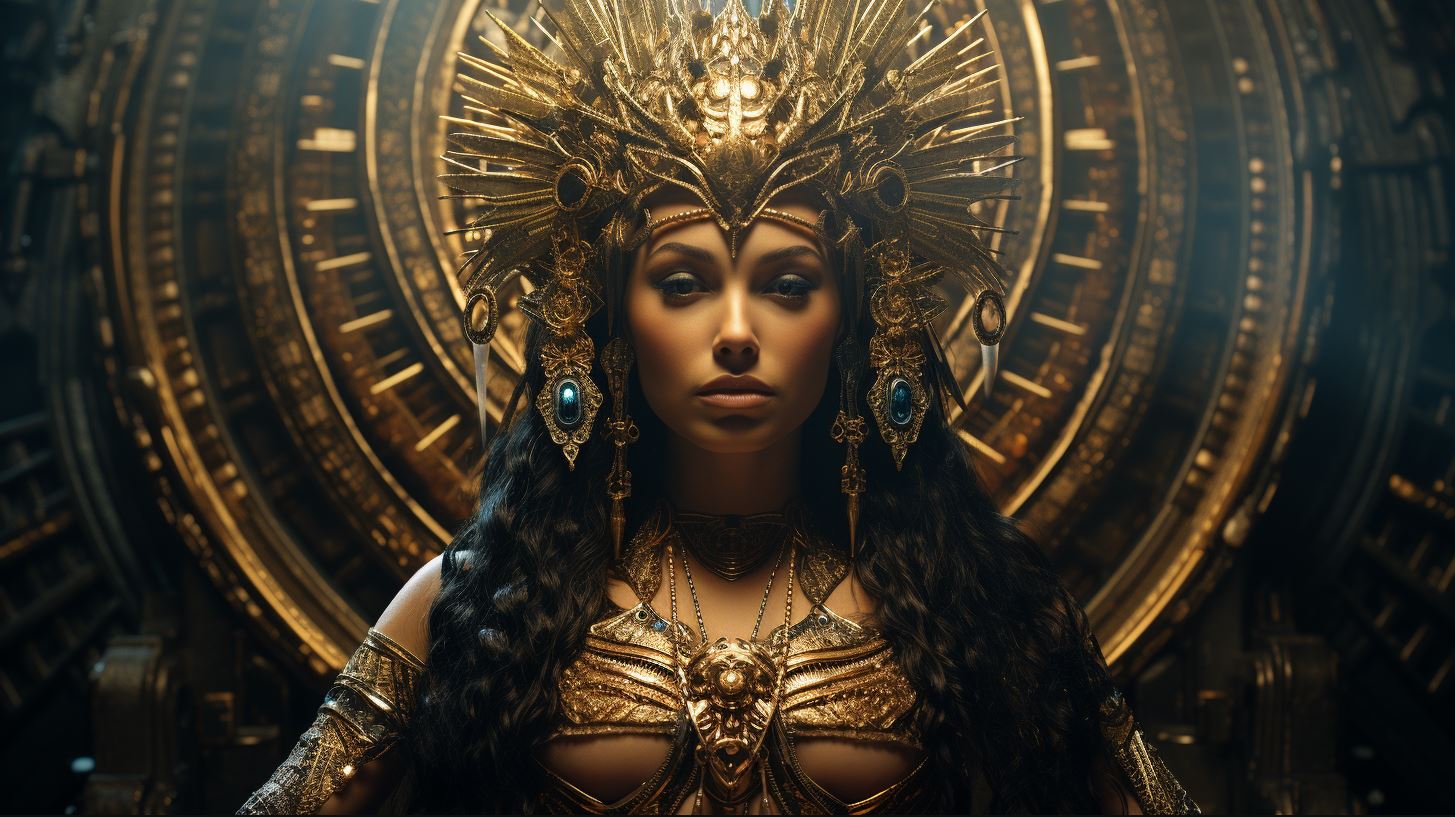The Enigmatic Echoes of Ninurta: The Mesopotamian God of War and Agriculture
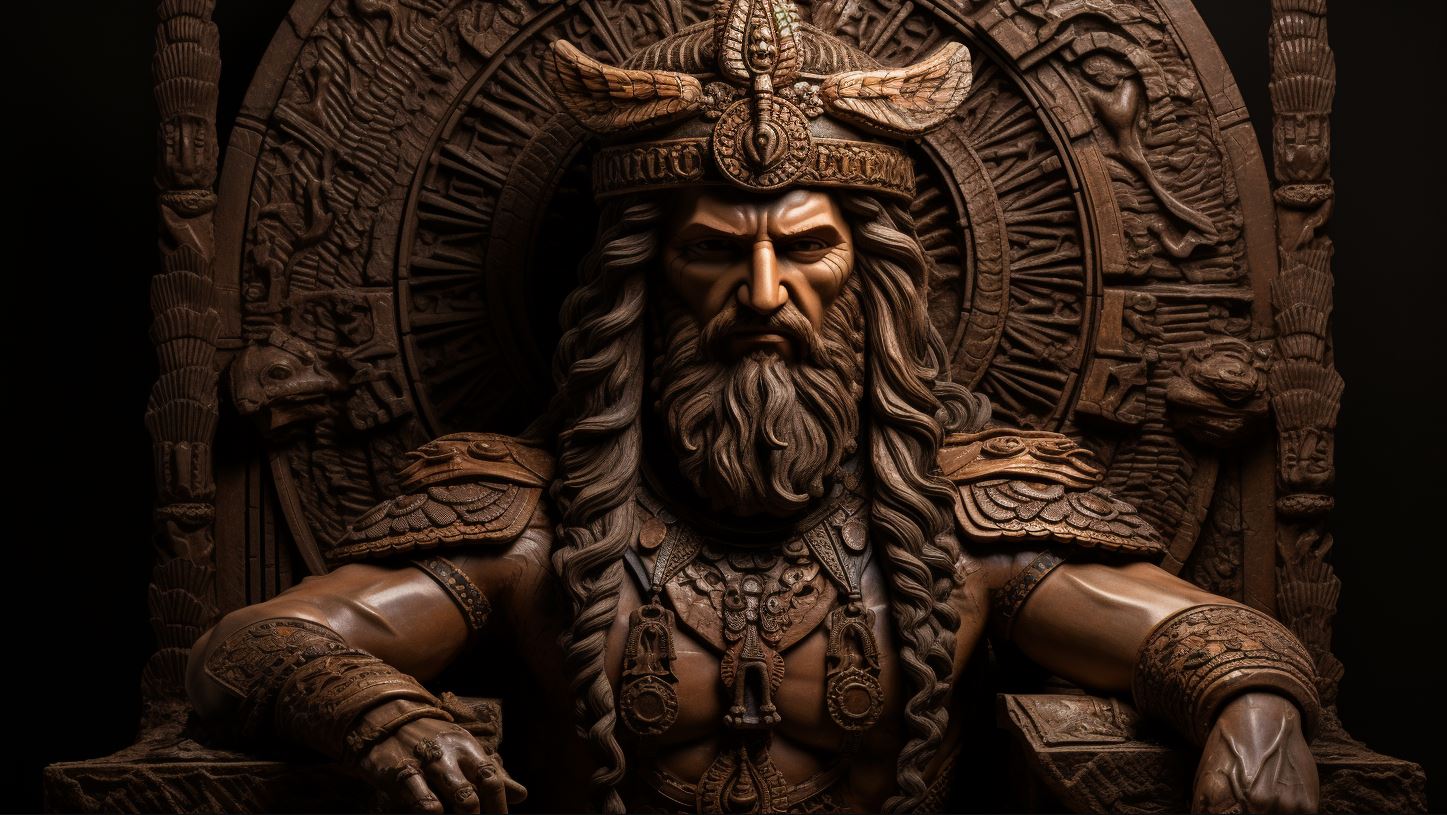
Ninurta, also known as Ningirsu god, played a significant role in ancient Near Eastern society, particularly within the Sumerian and later periods of the Assyrian Empire. This powerful deity was revered for his associations with agriculture, healing, and warfare, embodying the qualities of a mighty hunter and a warrior god.
The enigmatic echoes of Ninurta’s legend extend through his interactions with the demon Asag, the creation of the Tigris and Euphrates rivers, and his guardian role over the people deemed as the ‘Sheep of the Gods.
The goddess Baba, considered Ninurta’s wife and a goddess of healing, further added to the complex mythological tapestry of ancient Mesopotamia. Together, they were worshipped in temples across the land, including the notable temple in Kalhu, the capital of the Assyrian Empire.
Explore the legends, temples, and enduring legacy of these enigmatic deities, and uncover the ancient narratives etched in tablets that echo through time.
The Legend of Ninurta: Exploring the Mesopotamian God’s Mythology
The ancient Mesopotamian deity Ninurta, son of Enlil and a chief god within the pantheon, holds a prominent place in mythology, revered for his multifaceted symbolism and intriguing origins.
From the ancient city of Nippur to the late Assyrian Empire’s capital, Kalhu, Ninurta’s stories are preserved in poems and tablets, revealing his dual nature as a warrior and a nurturer.
Let us delve into the captivating legend of Ninurta and unravel the mysteries surrounding this enigmatic god.
Origins and Symbolism of Ninurta
As we explore the origins of Ninurta, we discover a complex tapestry of symbolism associated with this divine figure. Represented as a warrior, healer, and guardian, Ninurta embodies the duality of power and nurture, symbolizing the balance between war and agriculture, strength, and compassion.
His myth is replete with tales of battles against chaos, showcasing his role as a protector of the cosmic order.
The Role of Ninurta in Ancient Mesopotamian Society
Ninurta played a pivotal role in ancient Mesopotamian society, revered as a patron deity of various aspects of life. From the realm of law and justice to the realm of agriculture and healing, this multifaceted god held sway over crucial aspects of daily existence.
Through his associations with diverse spheres, Ninurta became a revered and influential figure within the social fabric of Mesopotamia, especially noted in the bible and other Near Eastern texts for his exploits and guardianship.
Ninurta’s Associations with Agriculture and Healing
Central to Ninurta’s identity are his deep-rooted connections with agriculture and healing. As a deity of fertility and growth, Ninurta ensured bountiful harvests and the well-being of crops, nurturing civilization with his agricultural prowess.
Moreover, his healing abilities provided solace and relief, liberating humans from ailments and protecting them from malevolent forces.
- A symbol of agricultural abundance and prosperity
- A guardian of crop fertility and protection against diseases
- A healer who cured and shielded humans from afflictions
- A bringer of balance between natural forces and human needs
Ninurta’s associations with agriculture and healing epitomize the intricate relationship between the divine and human realms, reflecting the profound impact of his worship on the lives of ancient Mesopotamians.
Ninurta’s Marital Connection: Unraveling the Relationship with Baba
Together, they formed a divine union that played a significant role in the beliefs and practices of ancient Mesopotamians.
Baba – The Healing Goddess and Patroness of Girsu
Baba, often depicted as a healing goddess, held a special place as the patroness of Girsu. She was revered for her ability to provide healing and protection to those in need.
Worship of Baba extended to various cities in Mesopotamia, including Nippur, Isin, Larsa, and Ur. Her appearance and attributes may evoke debates among scholars, further adding to her mysterious nature.
The Sacred Union: Ningirsu and Baba in Mesopotamian Beliefs
The sacred union between Ningirsu (another name for Ninurta) and Baba was a fundamental aspect of Mesopotamian beliefs.
Together, they represented the divine connection between healing, protection, and agricultural abundance. Their union symbolized the harmonious balance between the forces of nature and the well-being of the people. As the wife of Ningirsu, Baba provided support and assistance in his divine duties, further emphasizing the importance of their partnership.
This exploration into the life and legends of Ninurta, the Ninurta Mesopotamian god, and his divine consort, Baba, reveals the depth and complexity of Sumerian mythology and Mesopotamian mythology. Their stories, inscribed on the tablet and celebrated in the temple, continue to fascinate scholars and enthusiasts alike, offering a window into the spiritual life of the ancient Near Eastern civilizations.
Temples Dedicated to Ninurta: Centers of Worship and Power
The worship of Ninurta, extending to various temples throughout ancient Mesopotamia, served as centers of devotion and symbols of his power. Three prominent temples, in particular, held significant importance in the veneration of this deity, acting as the main cult centers for his worship.
The Eshumesha Temple in Nippur: Ninurta’s Primary Cult Center
Located in Nippur, the Eshumesha Temple stood as the primary cult center dedicated to Ninurta, the son of Enlil. This sacred site was revered for its connection to agriculture and healing, embodying the essence of the deity.
Within its walls, rituals, and ceremonies honoring Ninurta took place, reinforcing his role as a patron of farming and the provider of healing. Animal bones and ritual artifacts found at the site offer a glimpse into the practices that took place, allowing worshippers to connect with Ninurta and seek his blessings.
The Renowned Lagash Temple: A Testament to Ninurta’s Importance
In the Sumerian city-state of Lagash, a temple boasting grandeur and significance was dedicated to Ninurta. It stood as a testament to his importance and was reconstructed by King Gudea. This temple served as a focal point for worship and a place where devotees sought Ninurta’s guidance in matters of law, warfare, and agricultural prosperity.
Its architecture and decoration reflected the awe-inspiring nature of the god and his multifaceted attributes, including the representation of the winged disc, an inspiration for the god Ninurta‘s iconography.
Ashurnasirpal II’s Grand Temple in Kalhu: Honoring the Fierce Deity
Ashurnasirpal II, a prominent Assyrian king, constructed a grand temple in the city of Kalhu, his main cult center, as an homage to Ninurta.
This architectural marvel showcased the fierce and warrior-like aspect of the god, resonating with the Assyrians’ admiration for his martial prowess. Devotees flocked to this temple to seek Ninurta’s favor in battle and witness the representation of his power through grand sculptures and reliefs, including depictions of Ninurta residing with the slain heroes and the Anzû bird, symbols of his trials and victories.
These temples dedicated to Ninurta not only served as sacred spaces for worship but also held a prominent role in the social and cultural fabric of ancient Mesopotamia. They stood as tangible connections between humanity and the divine, allowing individuals to partake in the spiritual experience and seek blessings from the powerful deity.
Ninurta’s Exploits: Battles, Triumphs, and Divine Acts
Ninurta, the revered deity of ancient Mesopotamia, was known for his numerous exploits and divine acts that solidified his reputation as a formidable warrior and protector. This section delves into the captivating tales surrounding Ninurta’s feats, including his defeat of the demon Asag and the creation of the Tigris and Euphrates rivers, his role as the guardian shepherd of the ‘Sheep of the Gods,’ and his enduring legacy that influenced kings, Assyrian warfare, and more.
Ninurta’s Defeat of the Demon Asag: Creation of the Tigris and Euphrates
One of Ninurta’s most renowned victories was his epic battle against the demon Asag. Asag, a malevolent entity threatening the harmony of the world, was vanquished by Ninurta’s might and divine intervention.
In a remarkable display of power, Ninurta utilized stones to construct the mighty rivers Tigris and Euphrates, harnessing their water for irrigation purposes. This momentous act not only showcased Ninurta’s strength but also demonstrated his benevolence towards humanity, transforming the barren landscape into fertile lands.
Ninurta as the Guardian Shepherd: Protecting the ‘Sheep of the Gods’
While Ninurta was recognized as a deity of warfare, his role as a guardian shepherd reveals a different facet of his character. In Mesopotamian beliefs, humans were metaphorically referred to as the ‘Sheep of the Gods.’
Ninurta embraced the responsibility of safeguarding and guiding humanity, leading them towards prosperity and protection from evil forces. This nurturing aspect of Ninurta’s divine persona emphasized his care for the wellbeing of his worshippers, extending his influence from battles to the realm of everyday life.
Ninurta’s Legacy: Influence on Kings, Assyrian Warfare, and Beyond
As a revered deity, Ninurta’s influence extended far beyond his direct worshippers. Kings throughout history sought his favor and claimed to embark on hunting expeditions “by order of Ninurta.” This divine association served to legitimize their reigns and imbue them with the divine authority of Ninurta.
Additionally, Ninurta’s warrior attributes became deeply intertwined with Assyrian warfare, inspiring kings and soldiers alike to seek strength and success on the battlefield. The echoes of Ninurta’s legacy reverberated through Mesopotamian culture, leaving an indelible mark on the annals of history.
Enigmatic Goddess Baba: Discovering the Healing and Protective Qualities
Within the realms of ancient Mesopotamian mythology, the goddess Baba, known for her healing abilities, held a significant place as the patroness of Girsu and Lagaš. Her worship extended across various Mesopotamian cities, including Girsu, Nippur, Isin, Larsa, and Ur, embodying the ancient Mesopotamian god’s caring aspect.
Baba’s Worship and Influence Across Mesopotamian Cities
Baba’s presence was deeply ingrained in the religious practices of Mesopotamian society. As a deity of healing, she drew devotees from far and wide, seeking her divine intervention. Temples dedicated to Baba served as centers for prayers, rituals, and offerings, enabling worshippers to seek solace and hope in times of physical and spiritual afflictions.
These ceremonies may have included the invocation of her name, an act that was considered powerful for those who speak it in reverence.
Beyond her healing prowess, Baba was also regarded as a protective goddess.
Her presence offered guidance and safeguarded individuals and communities from malevolent forces. This role was especially significant, symbolizing her as “the trusted one,” akin to the biblical figure Nimrod, who was also noted for his protective qualities.
As a goddess who encapsulated the well-being of her worshippers, Baba’s influence spread across the Mesopotamian cities where her cult was established. Her temples, possibly adorned with symbols such as the palm tree or representations of her divine powers, brought forth a sense of security and a belief in the power of divine healing, resonating deeply with the people.
The Elusive Nature of Baba: Debates on Appearance and Pronunciation
Despite the reverence bestowed upon Baba, much about her remains elusive, including her physical appearance and the exact pronunciation of her name. Scholars continue to debate these aspects, which contributes to the mystique surrounding her identity.
Different pronunciations and artistic interpretations of Baba have surfaced over time, each adding layers to the understanding of her divine essence.
These debates serve as a testament to the enigmatic nature of Baba, symbolizing the enduring allure and intrigue that surrounds ancient Mesopotamian deities.
Even though glimpses of Baba’s significance have come to light, much remains veiled in the depths of time, leaving room for interpretation and discovery.
- Baba’s worship spanned multiple Mesopotamian cities, including Girsu, Nippur, Isin, Larsa, and Ur.
- She was revered for her healing abilities and was a source of solace and hope for those seeking divine intervention.
- Baba was also recognized as a protective deity, offering guidance and safeguarding individuals and communities.
- The exact physical representation of Baba remains elusive, with various artistic interpretations existing.
- Pronunciations of Baba’s name vary, adding to the mystery surrounding her.
The Lasting Legacy: Ninurta and Baba in Ancient Mesopotamian Culture
Explore the profound impact of Ninurta and Baba on ancient Mesopotamian culture.
From their representation in art, texts, and mythological literature to their significance in healing practices and religious customs, these deities left an indelible mark on the civilization.
Ninurta‘s Representation in Art, Texts, and Mythological Literature
The artistic depictions of Ninurta reveal his multifaceted nature as both a warrior and a deity of agriculture.
From statues and reliefs to inscriptions and hymns, the ancient Mesopotamians captured his essence in various forms of art. Texts and mythological literature further elaborate on his epic battles, divine acts, and role in shaping the world they inhabited.
This includes the tale of Ninurta’s battle with the six-headed wild ram and his journey on the magillum boat, showcasing his strength and determination.
Baba’s Importance in Healing Practices and Religious Customs
Baba, the revered healing goddess and patroness of Girsu, held a significant role in ancient Mesopotamian society.
Through her worshippers and healing rituals, she offered solace, protection, and spiritual guidance. Her influence extended beyond health and well-being, permeating religious customs and ceremonies in various Mesopotamian cities, showcasing her lasting legacy in the annals of Mesopotamian history.

